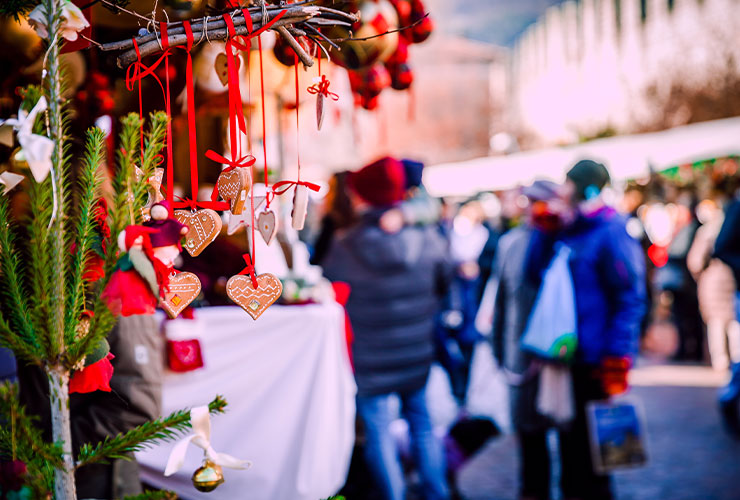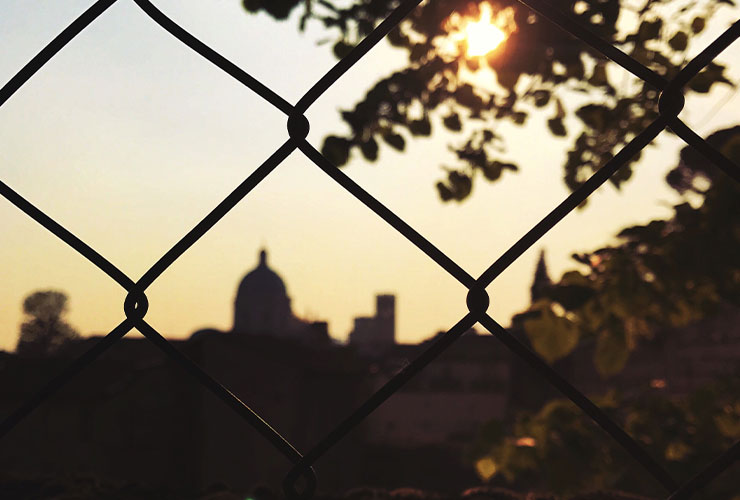Learning the months of the year in Italian might be helpful if you are planning a journey to Italy this summer or telling someone when your birthday is. Furthermore, there are plenty of expressions and sayings related to months that Italians use every day when talking to each other.
Let’s find out how to translate the months of the year in Italian.
Months of the year in Italian
| Italian | English |
| gennaio | January |
| febbraio | February |
| marzo | March |
| aprile | April |
| maggio | May |
| giugno | June |
| luglio | July |
| agosto | August |
| settembre | September |
| ottobre | October |
| novembre | November |
| dicembre | December |
As you can see, the names of the months are not capitalized, as for the days of the week and the seasons.
Examples:
Gianni va in Giappone a luglio.
Gianni flies to Japan in July.
Martina e Luca si sono laureati a gennaio.
Martina and Luca graduated in January.
Idioms with the months of the year in Italian

If you are walking down the street in Italy, it is not uncommon to hear some sayings from locals when talking about the month of the year we are in. These idioms generally come from folk tradition.
Here are some of the most used sayings you could learn by heart:
Marzo, mese pazzo.
March crazy month.
Marzo pazzerello, guarda il sole e prendi l’ombrello.
Nutty March, look at the sun and take your umbrella.
In March Italian weather is quite changeable. As there’s the sun, suddenly it starts raining.
Aprile, dolce dormire.
April, sweet sleeping.
In April spring comes and along with it the first heat. People usually feel tired and lazy in this particular period of the year. Due to the change of season, they just want to sleep and relax.
Ditty with the Months of the year in Italian
It’s time now to show you the best way to learn months of the year in Italian! Here is a famous ditty Italians use in many occasions to remember how many days are in each month:
| Italian | English |
| Trenta giorni ha novembre, con aprile, giugno e settembre, di ventotto ce n’è uno, tutti gli altri ne han trentuno. | Thirty days has November, with April, June and September, there’s just one with twenty-eight, all the rest have thirty-one. |
Articles with the months of the year in Italian

As in English, you will not find articles before the name of a month. However, there are some cases they might occur, e.g. in case you are referring to a specific month where something happened or will happen.
Examples:
Si dice che gennaio sia il mese più freddo dell’anno in Italia.
They say January is the coldest month of the year in Italy.
Nel luglio del 1789 scoppiò la Rivoluzione Francese.
The French Revolution broke out in July 1789.
Allora verrete a trovarci il prossimo agosto?
So you’ll come to visit us next August?
Prepositions with the months of the year in Italian

A and in
As regards prepositions, we generally use a or in before months in Italian. The choice of the preposition can vary according to the region you are at the moment. For example, In Tuscany and South Italy people usually prefer using a, while in North Italy it’s more common to hear in. By the way, remember that both forms are correct.
Examples:
In che mese siamo? Siamo in novembre.
What month are we in? It’s November.
A dicembre potremmo andare a sciare in Austria.
We might go skiing in Austria in December.
Note that:
The preposition a becomes ad in presence of another a afterwards.
Check out the following example:
Credo che quest’anno andrò a Lisbona ad aprile.
I think this year I’ll go to Lisbon in April.
Nel mese di
In order to stress the duration of the month, you are going to use the expression nel mese di.
Solitamente vado in vacanza nel mese di giugno.
I usually go on vacation in the month of June.
Da… a
On the contrary, you are required to employ da… a if you want to speak of a specific period of time related to the months of the year in Italian.
In Italia si va a scuola da settembre a giugno.
In Italy you go to school from September to June.
Andremo a New York da marzo a maggio. Ti va di venire con noi?
We are going to New York from March to May. Do you want to join us?
Months of the year in Italian and Important events

Let’s now see what important events each month brings in Italy.
Months of the year in Italian and Important events – Gennaio
L’Epifania
On January the 6th Italians celebrate the Epifania.
According to the folk tradition, kids usually receive a colourful sock filled with candies, toys and even black bitter coal (the reward for bad kids). All from an old lady called Befana who flies in the children’s homes riding her broom during the night.
The saying “L’Epifania tutte le feste si porta via” (with Epiphany all the holidays are over) and the ditty “La Befana vien di notte” are very popular in this period among Italians.
Months of the year in Italian and Important events – Febbraio

San Valentino
February is the month of love because San Valentino, Valentine’s Day, occurs. On February 14th couples exchange gifts and go to the restaurant for a romantic dinner.
Baci Perugina is a widely well-known type of chocolate, exceptionally made and sold in this period by the famous chocolate factory Perugina, based in Perugia.
Carnevale
Another important feast is Carnevale, Carnival. Italian Carnival always falls on Martedì Grasso, Shrove or Fat Tuesday. During the day, folk of all ages wear costumes and masks, taking part in joyful parades and throwing at each other streamers and confetti.
As expected, food plays an important role in the Italian Carnevale, too.
Months of the year in Italian and Important events – Marzo

Festa della Donna
On March 8th Italian women receive bunches of fragrant flowers known as mimosa in order to celebrate Festa della Donna, International Women’s Day. The choice of giving this particular type of flower derives from the fact that each mimosa blossom represents women’s economic, political and social achievements over the last centuries.
During this day, Italian television broadcast documentaries about the origins of this festivity and promotes awareness-raising campaigns against violence on women.
Festa del papà
In March another important festival is Festa del papà, Father’s Day.
During this day, schools plan projects and different activities to let Italian kids give something made with their hands to their daddies (e.g. drawings, handcrafted items). Some children even prepare cakes, sweets, chocolates or read out poems (often both in Italian and local dialect) by heart.
San Giuseppe
Father’s Day is also known as San Giuseppe, St. Joseph’s Day. This feast is mostly celebrated in the South of Italy. Here people go to church and then prepare a typical Italian dessert,the delicious zeppola di San Giuseppe.
Months of the year in Italian and Important events – Aprile

Pasqua
In April the most important festival is Pasqua, Easter. During this day, Italians receive “chocolate eggs” from their relatives or friends. They are particularly appreciated by kids, mostly for the surprise containing inside a gift. Beyond religious reasons, Easter is strongly meaningful to Italian families because they can find each other for a long and hearty dinner spending quality time all together.
Pasquetta
The day after Easter is called Pasquetta, literally “Little Easter”. It is an original Italian celebration where people organise an outdoor barbecue or picnic in a park, in a holiday farm or on the seashore with some friends or relatives.
Festa della liberazione

Festa della liberazione (April 25th) is another day off Italians have.
It is a national holiday that memorializes the end of Fascism and Nazi Germany occupation and the victory of the Resistance in Italy.
During the day, lots of documentaries, video-interviews and movies related to the festivity are broadcast on the main channels of Italian television.
Months of the year in Italian and Important events – Maggio
La Festa dei Lavoratori
On May 1st people don’t work and stay at home with their families. Sometimes, they organize outdoor trips, heading to areas of countryside, mountains, lakes, etc.
La Festa della Mamma
As for Father’s Day Italian kids give drawings or handmade items to their moms. Others prepare pies, sweets and read out poems instead.
Months of the year in Italian and Important events – Giugno

Festa della Repubblica
It occurs on June the 2nd. The day commemorates the institutional referendum held in 1946 after the Second World War and the Fall of Fascism. The main celebration takes place in Rome, capital of Italy, where a military parade and Frecce Tricolori demonstration are scheduled.
Months of the year in Italian and Important events – Luglio
In July Italians love going to the beach on the weekend when they don’t work because it is always sunny and hot in this period. In order to cool them down, they usually take a swim or drink something cold with their friends or relatives. In the evening, people who live in the same area are used to having dinner together under the stars. Alternatively, they go out for a walk or a drink in a bar.
Months of the year in Italian and Important events – Agosto

In August most Italian cities empty out as soon as people move to coast areas where they usually rent a house or reserve a room in a hotel close to the seaside for the whole month or for 15 days. However, some Italians prefer going to the mountains to avoid heavy summer heat and overflowing beaches stuffed with holiday-makers.
Ferragosto
During the week of Ferragosto (August 15th), people who aren’t on vacation yet stop working, too. On this day Italians celebrate with exclusive parties on the most famous Italian beaches, such as those of Adriatic Coast, Amalfi Coast and Emerald Coast. In addition, concerts with traditional music in the main Italian squares take place as well.
Months of the year in Italian and Important events – Settembre
September is considered “the month of the restart” because summer is over and students have to come back to school. In this period most stores open again and working people return to their city life after leaving beaches and summer holiday resorts. Nevertheless, older people who are retired just go on vacation in this period in order to avoid overcrowded places and cities, relax and have peace and quietness.
Months of the year in Italian and Important events – Ottobre

In October there are not any important festivities to celebrate. Despite that, this is the perfect period to visit Italian cities, historical places and museums because they aren’t crowded with tourists from all over the world and the weather is mild.
In coastal cities like Napoli, Bari and Palermo locals even go to sunbathe on the rocks or take a last swim before colder temperatures occur.
Months of the year in Italian and Important events – Novembre
Ognissanti
Allsaints occurs on November 1st. People take a day off from school or work and who is religious celebrates by going to Church.
Giorno dei morti
Il Giorno dei morti (November 2nd) is also a meaningful day because some people, especially in Southern Italy, usually go to the cemetery to honour the memory of their dead loved ones.
Months of the year in Italian and Important events – Dicembre

Immacolata Concezione
Christmas season starts on December 8th with Giorno dell’Immacolata Concezione, Day of Immaculate Conception. It commemorates the fact that the Virgin Mary has been free of original sin from the moment of her conception. On this special day lots of Italian families are used to baking biscuits, decorating their house and trees, wrapping their presents. Offices and schools are normally closed.
Natale
Natale (Christmas) is probably the most important festivity of the year for Italians.
It is always seen as a joyful day to meet up with friends and relatives, sit around the table, tasting lots of delicious traditional meals and good wines, unwrap all the gifts and play board games. Walking down the streets, you can bump into zampognari (bagpipe players) who are very successful to delight you with merry songs.
Capodanno
Another exciting occasion to celebrate with friends and families and have a big party all night long is Capodanno (New Year’s Eve). It starts in the afternoon with the famous aperitivo. After that, a typical big meal known as cenone follows in the evening. Some people choose to stay at home with their families, while others decide to have a great party in public squares and clubs. At midnight there’s the traditional countdown to welcome the new year.
After reading this article, you should be able to name which month you are in and pick the Italian event you don’t want to miss.
So, when do you come to Italy this year? A luglio or a settembre?



